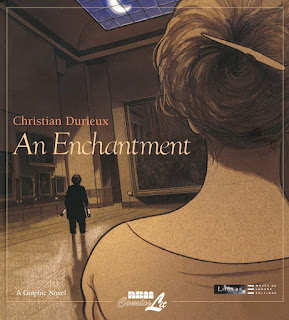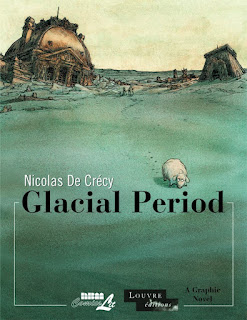Blue Is the Warmest Color by Julie Maroh
I shouldn’t be the one to tell you about this book: I’m the wrong gender, the wrong orientation, the wrong nationality, the wrong generation. So don’t trust me.
Blue Is the Warmest Color is a graphic novel by Julie Maroh – that’s what the edition I read says; I see indications that the author goes by Jul Maroh now and is transgender and nonbinary, which adds another wrinkle to the story. But this presents itself as fiction, even if, like anyone’s first big story in public, we suspect there are autobiographical elements in the mix. (It clearly can’t be entirely autobiographical, for reasons that should be obvious.)
Maroh is French; so is her cast. I found the story to be in a older mode than I expected: a frame story, coming out amid self-loathing, the clear tragedy of older gay/lesbian stories. It wasn’t nearly as 21st century as I was hoping from a book published in 2010 and translated in 2013 (and turned into a movie in French the same year). It’s not my world, not my community, but I thought we were past the sad dead LGBTQ people.
The main character is Clementine, but we start with her partner, Emma, after Clem’s death. Emma is retrieving Clem’s diaries from her partner’s parents. It’s not really clear how old everyone is, but we immediately dive out of the frame story into the main narrative, and the frame is just used for occasional (and I’d say, unnecessary) commentary. The frame is distancing at best: a more confident creator, later in their career, probably would not have made that choice.
The bulk of Blue is Clem’s story, starting on her fifteenth birthday in the mid-90s. She gets her first boyfriend, Thomas, is focused on school, has dreams of her future – the whole standard deal. She also sees a lesbian couple on the street, and has a strong, unexpected reaction to one of the women, with bright blue hair.
That’s Emma. We already know Clem ends up with Emma; there’s no mystery or surprise there; the frame story has eliminated that possibility. So I won’t run through the plot details, of how Clem denies she could possibly be lesbian, how wrong and unnatural and strange that is, how all of her friends (except one gay man) abandon her eventually. I said this was in the old mode: all that is familiar.
On the other hand, Clem does meet Emma more seriously, and they become first friends and then lovers. Emma is nearly a decade older and already in a relationship, with the forbidding Sabine, both of which would be warning signs in a more modern, conventional romance. But I think Maroh doesn’t mean any of it that way: this is a world where lesbians still live mostly quietly, out of sight, and young lesbians need to be introduced to that world and find a way in; they can’t just declare themselves and be accepted by the wider world.
(I may be naïve in thinking the other is true, now or at any time, in my country or this one. Again: don’t trust me.)
Blue covers two or three years in depth, and then jumps forward a decade to see Clem settled as a schoolteacher approaching thirty, to set up for the inevitable tragic end. There’s no intrinsic reason for this to be a tragedy; that’s unrelated to any of the main plot.
I would have preferred a happier romance; I was expecting one from the cover and the publication date. I’d like to think we’ve had enough tragedies about loves that can’t speak their names, and that most of us are happy to name those loves out loud, even if they’re not the ways we love. Again, I may be naïve.
But this is the story Maroh wanted to tell. It’s a personal, specific story, and I believe the world and the people. Maroh keeps it mostly monochrome, in soft greys and off-blacks, with blue as the one pop of color, making Emma almost luminous, especially in the early days. Like a beacon, like a signpost to a better world for Clem, if only she’s able to follow that sign and join that world – as she does, for a time.
Reposted from The Antick Musings of G.B.H. Hornswoggler, Gent.





















